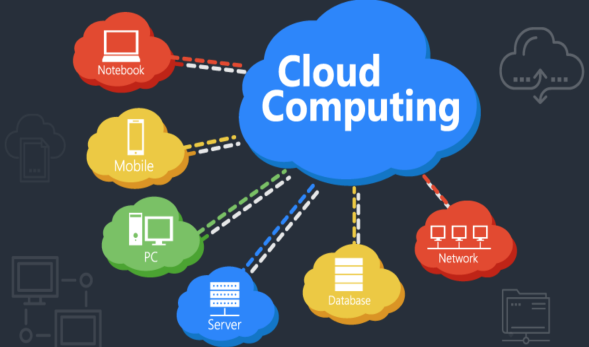
What Is Cloud Computing Technology?
You are using cloud computing on a daily basis, whether you realise it or not. It’s the technology behind photo, video and document storage, web email, instant messaging, and online office productivity software.
Cloud computing also makes it possible for businesses to quickly build and deploy apps without hardware constraints. This means business transformation can happen faster, and new opportunities can be created.
What is Cloud Technology?
You’re probably already using cloud technology on a regular basis, even if you don’t realize it. When you send emails, upload photos to Instagram or Facebook, watch movies and TV shows on Netflix, or store data in your personal Dropbox or Google Drive, cloud technology is what makes it possible.
The cloud is a collection of servers that are located in data centers around the world. These servers are accessed via the Internet, which means that users and businesses don’t have to worry about buying and maintaining their own hardware or software applications. The data that is stored in the cloud is also easily accessible from any device, which is especially helpful for businesses that need to use information from different locations.
In terms of business use, the cloud is used for a variety of purposes, from storage to processing big data. Many organizations have started to embrace the cloud because it can save them money and provide a more flexible IT environment. For example, the cloud allows companies to scale up or down quickly based on demand. This flexibility is particularly important for small businesses, which may not have the resources to invest in large infrastructure projects.
There are several different types of cloud services, including software as a service (SaaS), infrastructure as a service (IaaS), and platform as a service (PaaS). All of these services are designed to make it easier for businesses to deploy and manage their applications. However, each type of cloud has its own advantages and disadvantages.
SaaS is the most popular form of cloud computing. It allows users to access applications over the Internet without having to install them on their computers or mobile devices. This is the type of cloud computing that most people are familiar with, as it is used for services such as email, social media, and online banking.
IaaS is a type of cloud computing that provides servers and storage to businesses. This allows businesses to build their own applications on top of the infrastructure that is provided by the IaaS provider. This is similar to how businesses rent space on a data center floor, except that the IaaS provider handles all of the equipment and maintenance.
What are the Benefits of Cloud Technology?
One of the biggest benefits of cloud technology is that it can save businesses money. This is because when companies use the cloud, they don’t have to worry about maintaining their own infrastructure or paying for hardware upgrades. Instead, they can pay for the service they need on a pay-as-you-go basis. This can be a great option for small businesses, as it allows them to save money on expensive infrastructure and software.
Another benefit of cloud computing is that it can help businesses increase their productivity. This is because it gives employees access to data from anywhere, at any time, as long as they have an internet connection. This can be especially beneficial for businesses that have remote workers or locations that are spread out across the country or the world. It can also help to improve collaboration, as people can work on the same document at the same time and make changes without having to send it back and forth between different people.
The cloud can also help to keep data secure. This is because it provides a layer of protection that can prevent hackers from accessing private information. It also helps to reduce the risk of a data breach, which can damage a business’ reputation and lead to loss of revenue. In addition, the cloud can provide advanced security features such as granular permissions and access management via federated roles. These features can ensure that only the right people have access to sensitive information and that data is securely deleted when it is no longer needed.
One of the main concerns of many businesses when it comes to cloud computing is that it can be difficult to maintain the same level of security in the cloud as in a traditional IT environment. This is because the data stored in the cloud isn’t stored locally and it can be hard to verify where it is physically located.
However, with the growth of the cloud, it’s becoming easier for businesses to secure their data in the cloud. There are now a wide variety of security options available for businesses, including encryption and multi-factor authentication. This means that it’s possible to have the best of both worlds – the security and reliability of cloud technology, as well as the control and visibility that is still required for traditional IT systems.
What is the Future of Cloud Technology?
Cloud computing is transforming the way people work, play, and communicate. From big enterprises to tiny startups, it is used by a variety of organizations to store data and run applications online. This technology allows you to access the information you need anywhere at any time, as long as there is an Internet connection. It is the backbone that makes the Internet work, and it is what powers services like email, social media, video streaming, and online gaming. In the future, cloud computing will continue to evolve, with new features and functionality that allow it to meet the needs of businesses and consumers alike.
One of the most significant changes is how quickly and easily new products and services can be launched using the cloud. It eliminates the need for costly infrastructure investment and enables companies to respond to market needs more quickly. In addition, the cloud can be used to develop and test new technologies, such as AI, blockchain, and quantum computing, making it an important tool for innovation and growth.
Another benefit of the cloud is its scalability and flexibility. Businesses can increase storage capacity during busy periods and scale back down again when demand slows down. This is especially helpful for businesses that need to manage unpredictable workloads, such as retail companies during the holidays or tax services at financial year-ends.
The use of the cloud is rapidly expanding across all industries. In fact, 85% of software developed since 2012 is cloud-enabled. This trend is expected to continue, with companies leveraging multi and hybrid cloud environments as they look for cost efficiency and security.
While the cloud is revolutionizing how we work and play, it still faces challenges. One challenge is the shortage of talent with the skills necessary to support cloud applications. This is particularly true for DevOps and multi-cloud management, where the right combination of knowledge and tools can be critical to success.
Another challenge is the need to ensure security and compliance with industry regulations. While security measures are continually improving, it is important for businesses to understand what risks they face when implementing cloud solutions and implement policies and processes that can reduce those risks.
What is the Cost of Cloud Technology?
Cloud computing is a collection of technologies that allow you to store and access data over the Internet. It’s used by small and large businesses alike. Most people don’t realize that they use the cloud every day, for example, when they send email, watch movies or TV, listen to music, work from home, or store pictures and files. Cloud computing is made possible by a network of servers that are located around the world. The servers can be owned by private companies, organizations, or governments. The cloud technology is often divided into three services: software-as-a-service (SaaS), infrastructure-as-a-service (IaaS), and platform-as-a-service (PaaS).
One of the biggest benefits of cloud computing is that it can help reduce operating costs. By moving data to the cloud, you can eliminate the need for expensive hardware like data storage servers, which can cost thousands of dollars each and require supporting equipment that can take up an entire room. Additionally, cloud computing is often more energy-efficient than traditional data systems, as it requires less power to run.
There are a number of factors that influence the cost of cloud computing, including the type and quantity of services purchased, hardware needs, networking costs, and storage requirements. For instance, software-as-a-service (SaaS) prices are typically based on the type and number of features available, while IaaS pricing is based on the amount of computing resources needed to support an application. Networking costs are based on the amount of data transferred in and out of the cloud, and storage costs are based on the type and quantity of storage required.
A Pay-As-You-Go model is also available, which is great for newcomers and can help minimize expenses by allowing users to only pay for what they actually use each month. However, this can lead to unexpected spikes in billing, so it’s important to consider the needs of your business before choosing a payment model. In addition, it’s important to factor in any upfront costs associated with implementing the cloud, such as personnel training and migration expenses. In addition, you should also be aware of any potential downtime or other unplanned costs that may arise.







